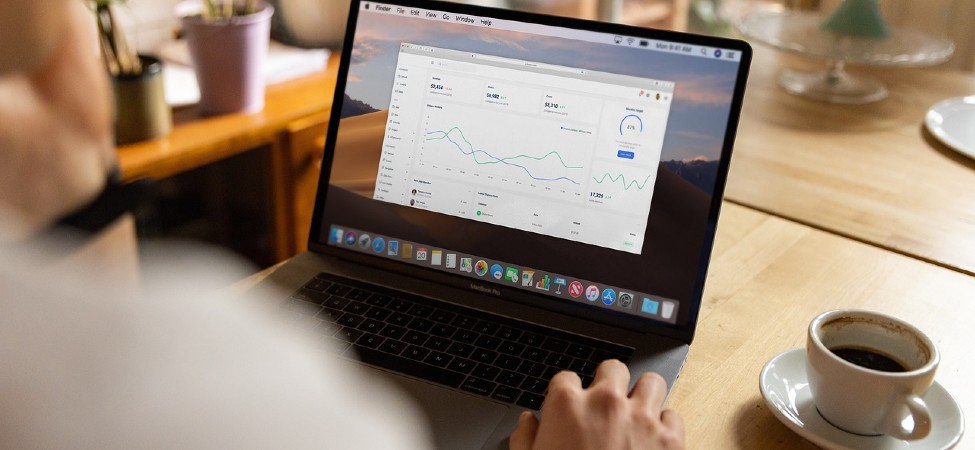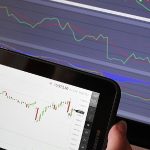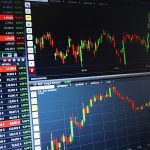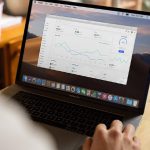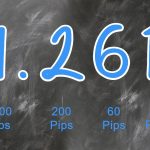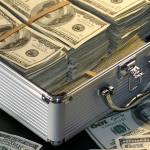Are you new to the world of Forex trading? Don’t worry – you’re not alone. With so many different terms and concepts, it can be overwhelming to try and understand the Forex market. That’s why we’ve put together this introduction to Forex terminology. We’ll provide you with the basics you need to know before getting started in Forex trading, so you can confidently make your trades with knowledge and confidence.
From understanding the currency pairs you’ll be trading to diving into the jargon of technical analysis, this guide will help you get a better grasp of the Forex market so you can start trading with success.
What is Forex Trading?
When people talk about Forex, they’re referring to the “foreign exchange market,” which is where currencies are traded. For example, when you buy British pounds with U.S. dollars, you’re trading forex. The foreign exchange market is the largest financial market in the world, with approximately $5 trillion traded daily.
There are a few different ways you can trade the forex market. One is to open a forex trading account and trade currencies manually. The other is to sign up for a forex trading bot like the one offered by Hexabot. A bot (short for “robot”) makes purchases and sales automatically based on pre-set rules. If you’re just getting started with trading or want to supplement your income, a bot can be a good option. You can use it to trade any market that’s open 24/7, like the forex market, and you can set it up to work while you’re sleeping.
Currency Pairs
The first thing you need to understand is what a currency pair is and how it works. The currency pair is the standard way of expressing any given exchange rate between two currencies. For example, the exchange rate between the U.S. dollar and the British pound might be $1.50 for every pound. This exchange rate is expressed as the USD/GBP currency pair. In the example above, the USD is the first currency listed in the pair (the “first currency”), and the GBP is the second currency listed in the pair (the “second currency”).
If you want to buy British pounds, you would buy this currency pair by entering an order that says “Buy $1.50 GBP.” Let’s say you want to sell British pounds. You would then sell the same currency pair by entering an order saying “Sell $1.50 GBP.” Currency pairs are traded in pairs because they show the relative value of one currency compared with another.
For example, the USD/GBP exchange rate shows how many dollars are required to purchase one pound. Let’s break down the steps involved in buying and selling a currency pair. First, let’s say you’re buying the USD/GBP currency pair. You would purchase one dollar and 50 pence. Next, let’s say you’re selling the USD/GBP currency pair. You would sell one dollar and 50 pence.
Bid and Ask Prices
The next thing you need to understand before trading currency pairs is the difference between the bid and ask prices. These are the numbers you’ll see when you look up a currency pair in your trading platform. The bid price is the price at which someone is willing to buy a currency pair. The ask price is the price at which someone is willing to sell the currency pair. Let’s go back to the example above with the USD/GBP currency pair. Let’s say the bid price for this currency pair is $1.50. This means that someone is willing to buy one pound for $1.50. And if the ask price for this currency pair is $1.51, this means that someone is willing to sell one pound for $1.51.
The bid and ask prices you see for a currency pair are the prices at which the market is currently trading that currency pair. You can use the bid and ask prices to help you understand how much of a margin you’ll have when you make a trade. If you place an order to buy a certain amount of a certain currency pair, the exchange will only buy you that much of the currency pair at the current bid price. If you want to buy more of that currency pair, you’ll need to increase the bid price by adding a “bid increment.” The same applies if you want to sell a certain amount of a currency pair. You’ll only be able to sell that amount at the current ask price. If you want to sell more, you’ll need to increase the ask price by adding an “ask increment.”
Leverage
The next thing you need to understand before trading currency pairs is what leverage is. Leverage is a type of trading that allows you to trade a larger amount than your initial investment. This means if you have $1,000 in your account, you can trade $10,000 worth of currency pairs. This can be a good thing because you can make more profit. But it can also be a bad thing because you could also lose more money. It all depends on your trading strategy and whether or not you know how to properly use leverage.
With that in mind, there are two types of leverage in the Forex market: Standard Leverage: This is the default leverage that you’ll receive when you open a trading account. It’s available at almost any Forex broker. Typically, you’ll be able to trade with a minimum of $500 worth of initial capital. Credit/Debit Leverage: This type of leverage is provided by certain brokers as an added feature. You’ll need a minimum amount of initial capital to be able to trade with credit/debit leverage. It can also come with certain fees.
Margin
The next thing you need to understand before trading currency pairs is what margin is. Margin is the amount of money you need to deposit into your trading account in order to trade a currency pair. It can also refer to the collateral you put up when you trade with leverage. Let’s go back to the example above with the USD/GBP currency pair. Let’s say the margin required to buy one pound is $3. If you want to buy $10,000 worth of British pounds, you’ll need to put down $3,000 into your account.
This means that if the value of one pound drops to $1, you will owe $2,000 in addition to the $3,000 you put down. But if the pound goes up in value and rises to $2, you will have gained $7,000 from the currency pair. In other words, you can withdraw your money without paying back the $3,000 you put down.
Keep in mind that the value of the currency pair will fluctuate over time. When you trade with leverage, the amount of margin you need to put into your account can vary depending on your leverage level. If you’re trading with standard leverage, you’ll need to put down at least 50% of the value that you want to trade. If you’re trading with credit/debit leverage, you’ll need to put down at least 30% of the value of the trade.
Pip
The next thing you need to know before trading currency pairs is what a pip is. A pip is a unit of a price change that indicates how much a currency pair has moved. It’s often used to express a change in value for a single currency, as in, “The U.S. dollar rose by 10 pips against the British pound.” It’s also used to express a change in value for a currency pair, as in, “The USD/GBP pair rose by 10 pips today.” The value of a pip varies depending on how much money you’re trading.
For example, if you’re trading $1,000 worth of currency, a single pip will be worth $10. If you’re trading $10,000 worth of currency, a single pip will be worth $100. This means that if you want to buy $10,000 worth of British pounds, a single pip change in the value of the pound will change your profit or loss by $100.
Technical Analysis
When you see an analysis of the Forex market, you might want to know what is data used. Well, you’ll encounter two types of analysis, which are fundamental analysis and technical analysis.
Fundamental analysis refers to analyzing economic factors like rate of interest, investor sentiment, and political factors to gauge the future price movements of a currency pair. Technical analysis, on the other hand, is the study of past market data, like price movements, volume, and current levels of supply and demand to forecast future price movements.
Moving Averages
If you’re familiar with trading stocks, you’ve probably heard about moving averages. It’s a simple technical analysis tool that you can use to identify trends and mark support and resistance levels. Moving averages are basically the average price of a security over a set period of time.
For the Forex market, the most common averages are the 50- and 200-period moving averages (MA). The 50-MA is the average price of the past 50 days, while the 200-MA is the average price of the past 200 days. When the current price is above 50-MA or 200-MA, it’s a bullish market. And when the price is below the average, it’s a bearish market.
Support and Resistance
You’ll often hear about support and resistance in Forex trading. Support refers to the price level at which demand is thought to be strong enough to prevent the price from declining further. Resistance refers to the price level at which supply is thought to be strong enough to prevent the price from rising further. If a currency pair is trading below the support level, it means that it’s in a downtrend.
If a pair is trading above the resistance level, it means that it’s in an uptrend. If you’re looking to buy a currency pair, it’s wise to wait until it breaks above the resistance level. If you’re looking to sell a currency pair, it’s wise to wait until it breaks below the support level.
Risk Management
Risk management is the most important aspect of trading. Without it, traders will lose all their money in no time at all. Risk management refers to the way you manage your trading risk. The best way to go about this is to set a trading plan and stick to it. When you set a trading plan, you need to determine how much you’re willing to invest in this type of investment, set goals, and the time frame within which you intend to achieve them. You also need to know how much you’re willing to risk.
This way, you’ll minimize your losses and maximize your gains. There are many other aspects of forex terminology that you may come across as you start trading. Remember that knowledge is power, and the more you know about the Forex market, the more successful you can be as a trader. With these basics, you can confidently dive into the Forex trading world and start making smart trades with success.

